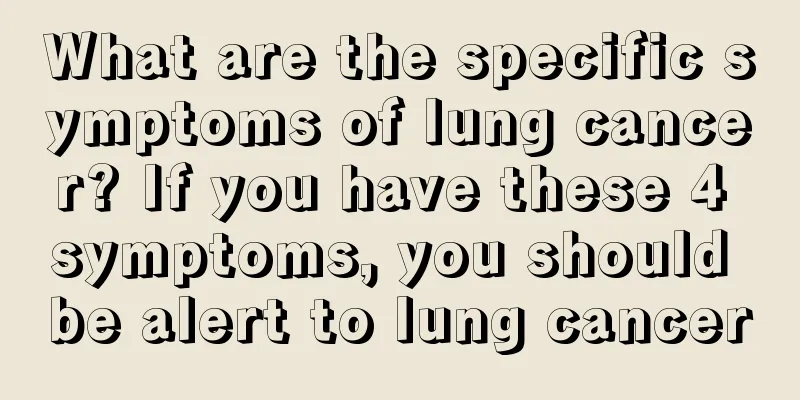Routine blood test results for tuberculosis

|
Many people are afraid of tuberculosis, a chronic infectious disease caused by bacteria, the most common way of transmission is through saliva. Currently, there is no specific drug for tuberculosis in clinical practice. In addition to chemotherapy, it is also necessary to take medications corresponding to the period of the disease, undergo regular checkups and take medication throughout the course. The most important test for tuberculosis is through sputum examination, and a routine blood test is not absolutely necessary. Tuberculosis is a chronic infectious disease caused by infection with Mycobacterium tuberculosis. Mycobacterium tuberculosis may invade various organs in the human body, but mainly invade the lungs, which is called pulmonary tuberculosis. Tuberculosis is a chronic and slow-onset infectious disease that is common among young people. The incubation period is 4 to 8 weeks. 80% of them occur in the lungs, and other parts (cervical lymph nodes, meninges, peritoneum, intestines, skin, and bones) may also be secondarily infected. Respiratory transmission between people is the main way of transmission of this disease. The source of infection is contact with tuberculosis patients who excrete bacteria. With the spread of environmental pollution and AIDS, the incidence of tuberculosis has become increasingly serious. Except for a few cases with acute onset, most cases present a chronic course clinically. There are often systemic symptoms such as low fever and fatigue, and respiratory system manifestations such as cough and hemoptysis. examine 1. Smear test The patient's sputum or other body fluids are made into a smear and tested under a microscope for the patient's negative or positive test results. 2. X-ray examination It can not only detect tuberculosis at an early stage, but also diagnose the location, range, nature, development and effect of the lesions. 3. Tuberculin test (1) A positive test indicates tuberculosis infection, but does not necessarily mean the patient is ill. A positive skin test at a dilution of 1 often indicates the presence of active tuberculosis lesions in the body. (2) A negative result indicates no tuberculosis infection. However, the following situations should still be excluded. ① After tuberculosis infection, it takes 4 to 8 weeks for the allergic reaction to be fully established; therefore, in the early stage of allergic reaction, the tuberculin test may be negative. ② For malnourished patients who use immunosuppressants such as glucocorticoids, as well as patients with measles and whooping cough, the corticosteroid reaction may disappear temporarily. ③Severe tuberculosis and various critically ill patients have no response to tuberculin. ④Others: The tumor cell reaction is often negative in patients with lymphoimmune system defects (leukemia, sarcoidosis) and the elderly. 4. Lymphocyte culture + interferon-γ release test It is more sensitive and specific than the tuberculin skin test (PPD) and is not affected by previous BCG injections, but it cannot distinguish between latent infection and active tuberculosis. 5. Molecular Biology Methods PCR-TB. diagnosis The diagnosis can be confirmed based on the cause, clinical manifestations and laboratory tests. treat Before determining the treatment principles and selecting the therapy, the type of tuberculosis and the current progression and condition of the lesions should be determined, and the presence of active tuberculosis in other parts of the body other than the lungs should be checked. At the same time, follow the following treatment principles: 1. There are many bacteria in early lesions, so drugs are more likely to work; 2. The dosage is appropriate to achieve the maximum bactericidal or bacteriostatic effect, while being easily tolerated by patients and with little toxicity; 3. Combined medication can prevent the development of drug resistance. Combined medication can also select drugs for bacteria in various metabolic states and intracellular and extracellular bacteria, thus achieving the purpose of enhancing drug efficacy; 4. Medication cannot be discontinued at will. Intermittent therapy has specific requirements on dosage and interval, and its usage also has certain rules, which does not belong to intermittent therapy; 5. Chemotherapy must be continued throughout the entire course, with the aim of eliminating persistent bacteria and preventing recurrence. The full course is not necessarily a long one. Only by following the above five principles, early, appropriate, combined, regular and full course, can we ensure thorough treatment. |
<<: Specific drug for tuberculosis
>>: Is it a big deal if rat blood touches the skin?
Recommend
Why can't decayed teeth be filled?
In daily life, many people develop cavities becau...
The most effective medicine for frostbitten hands
Although human skin can protect against a certain...
Can advanced colorectal cancer be cured?
In recent years, with the improvement of living s...
Can I wash my face right after sunbathing?
Generally speaking, it is not recommended to wash...
How many days after ovulation does it take for implantation to occur?
The method of calculating the ovulation period is...
The benefits of scraping the soles of feet
There are many acupuncture points on the soles of...
How to avoid pituitary tumor metastasis
Clinically, it is found that many patients with p...
Ginger and eggs relieve cough
China has left behind many folk remedies througho...
When is the best time to drink tea?
Tea culture and wine culture are the cultural her...
What foods can help clear the lungs after smoking?
Smoking is harmful to health and the organ that i...
What does droopy eyes look like
Drooping eyes are also a common manifestation. Dr...
Can I drink chrysanthemum and wolfberry tea when I have a cold?
Chrysanthemum and wolfberry tea is drinkable as l...
What is the cause of the stabbing pain in the temple
The temple is a very important acupuncture point,...
Experts explain what symptoms may occur when suffering from uterine cancer?
The incidence of uterine cancer has been increasi...
Where are moles most likely to turn into cancer
Some moles may become cancerous? When you find a ...









